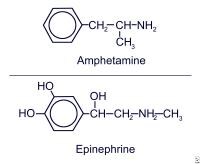In 2009 the United States The legislature tried to rescue the economical climate with a $700 billion bailout for foreclosure loan agencies, however there was a growing agreement that the deepening collapse of the real estate industry was at the heart of the nation's acute economical crisis. After spending billions of dollars saving banking institutions only to see the economical climate spiral even deeper into crisis, both generous and traditional economic experts and lawmakers pushed to divert an economical stimulus bill to what they saw as the core problem: the real estate industry. But beneath the agreement over helping the real estate foreclosure loan industry, there were huge differences over who should benefit under the competing plans. Dems desired to aim cash directly at people in the greatest distress; and Conservatives desired to aim cash at almost all home buyers, on the theory that a rising trend would eventually lift all boats.
Friday, July 13, 2012
Monday, July 2, 2012
Clinical effects of amphetamine
Amphetamines are a class of compounds increasingly abused in regions of the world such as the western United States, Australasia, and Europe. Synthetic amphetamine compounds commonly are produced in clandestine laboratories and vary in purity and potency. Other potentials for amphetamine abuse include prescription medications and various over-the-counter diet pills.
Clinical effects of amphetamine abuse are significant and commonly observed in EDs. The ED physician's ability to recognize and treat amphetamine intoxication is very important.
The phenylethylamine structure of amphetamine (see the image below) is similar to catecholaminergic, dopaminergic, and serotonergic agonists (biogenic amines), which may explain their actions.
 Amphetamine and epinephrine.
Amphetamine and epinephrine.
The relative activities that amphetamines have to stimulate the receptors of these biogenic amines are dependent on the chemical substituents on the amphetamine molecule; thus, the clinical presentation is dependent on the type of amphetamine used. For example, methamphetamine lacks much of the peripheral stimulant properties of amphetamine while still offering euphoric and hallucinogenic properties. These actions are similar to those of cocaine; however, while effects of cocaine last for 10-20 minutes, duration of amphetamine action is much longer, lasting as long as 10-12 hours.
The routes of amphetamine administration may be oral (ingestion), inhalation (smoke), or injection (intravenous). Oral use is associated with an approximate 1-hour lag time before onset of symptoms, whereas inhaled and intravenous methods yield effects within a few minutes. Peak plasma concentrations occur in 5 minutes with intravenous use, 30 minutes with nasal or intramuscular use, and 2-3 hours postingestion.
Use appears to vary with gender and race. Recent work has found correlations between personality traits (risk taking and reward sensitivity) and responses to amphetamine use
Clinical effects of amphetamine abuse are significant and commonly observed in EDs. The ED physician's ability to recognize and treat amphetamine intoxication is very important.
The phenylethylamine structure of amphetamine (see the image below) is similar to catecholaminergic, dopaminergic, and serotonergic agonists (biogenic amines), which may explain their actions.
 Amphetamine and epinephrine.
Amphetamine and epinephrine.The relative activities that amphetamines have to stimulate the receptors of these biogenic amines are dependent on the chemical substituents on the amphetamine molecule; thus, the clinical presentation is dependent on the type of amphetamine used. For example, methamphetamine lacks much of the peripheral stimulant properties of amphetamine while still offering euphoric and hallucinogenic properties. These actions are similar to those of cocaine; however, while effects of cocaine last for 10-20 minutes, duration of amphetamine action is much longer, lasting as long as 10-12 hours.
The routes of amphetamine administration may be oral (ingestion), inhalation (smoke), or injection (intravenous). Oral use is associated with an approximate 1-hour lag time before onset of symptoms, whereas inhaled and intravenous methods yield effects within a few minutes. Peak plasma concentrations occur in 5 minutes with intravenous use, 30 minutes with nasal or intramuscular use, and 2-3 hours postingestion.
Use appears to vary with gender and race. Recent work has found correlations between personality traits (risk taking and reward sensitivity) and responses to amphetamine use
Subscribe to:
Comments (Atom)